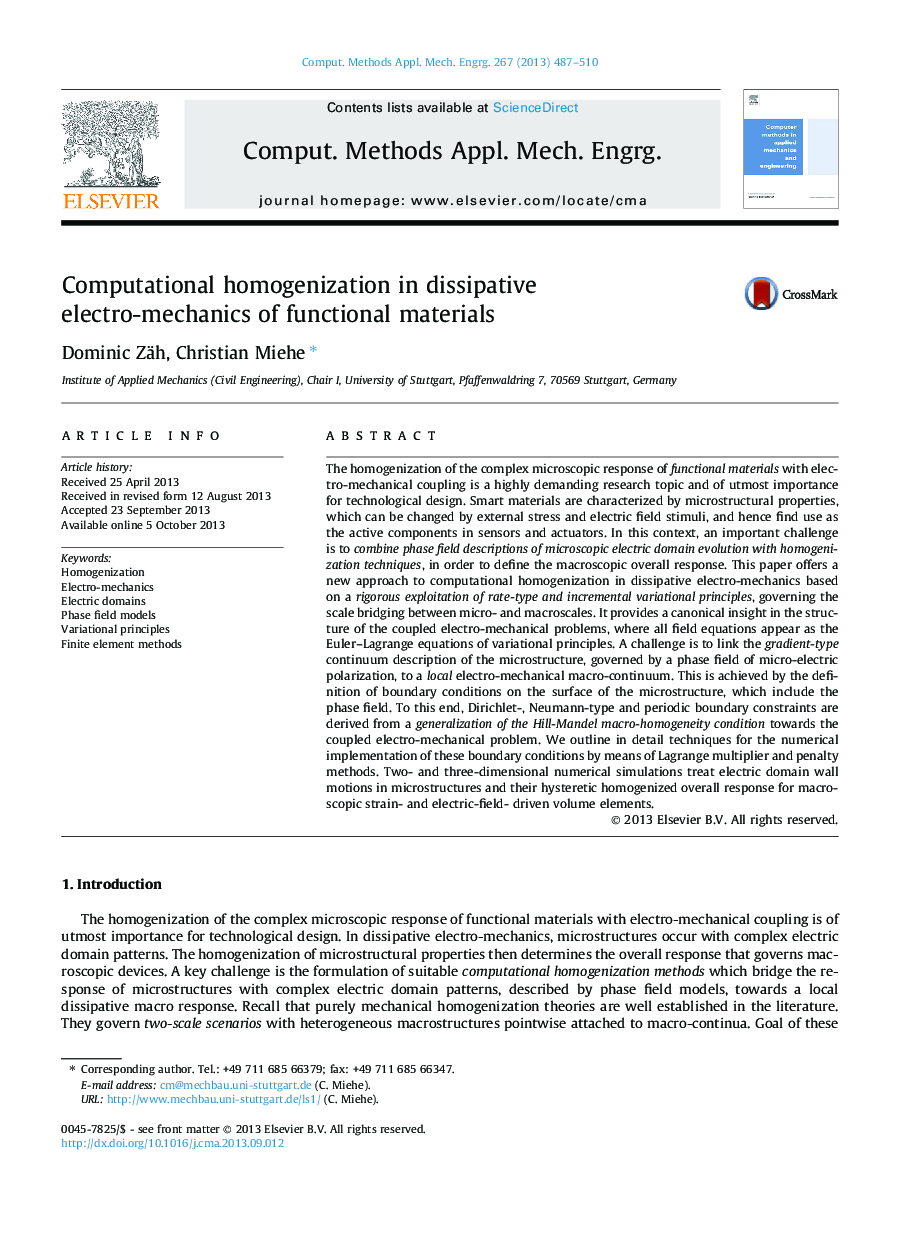| Article ID | Journal | Published Year | Pages | File Type |
|---|---|---|---|---|
| 498152 | Computer Methods in Applied Mechanics and Engineering | 2013 | 24 Pages |
The homogenization of the complex microscopic response of functional materials with electro-mechanical coupling is a highly demanding research topic and of utmost importance for technological design. Smart materials are characterized by microstructural properties, which can be changed by external stress and electric field stimuli, and hence find use as the active components in sensors and actuators. In this context, an important challenge is to combine phase field descriptions of microscopic electric domain evolution with homogenization techniques, in order to define the macroscopic overall response. This paper offers a new approach to computational homogenization in dissipative electro-mechanics based on a rigorous exploitation of rate-type and incremental variational principles, governing the scale bridging between micro- and macroscales. It provides a canonical insight in the structure of the coupled electro-mechanical problems, where all field equations appear as the Euler–Lagrange equations of variational principles. A challenge is to link the gradient-type continuum description of the microstructure, governed by a phase field of micro-electric polarization, to a local electro-mechanical macro-continuum. This is achieved by the definition of boundary conditions on the surface of the microstructure, which include the phase field. To this end, Dirichlet-, Neumann-type and periodic boundary constraints are derived from a generalization of the Hill-Mandel macro-homogeneity condition towards the coupled electro-mechanical problem. We outline in detail techniques for the numerical implementation of these boundary conditions by means of Lagrange multiplier and penalty methods. Two- and three-dimensional numerical simulations treat electric domain wall motions in microstructures and their hysteretic homogenized overall response for macroscopic strain- and electric-field- driven volume elements.
